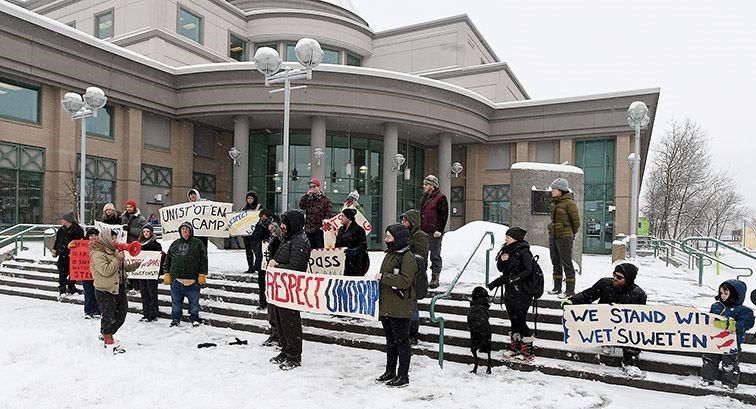The arrest this week of those manning blockades against the Coastal GasLink pipeline project has created plenty of uproar but amid the controversy, there are some finer points worth keeping in mind as people wade their way through the debate.
Here are three of them:
1. As it stands, it's a temporary injunction: CGL went to B.C. Supreme Court in mid-December seeking a permanent injunction against the blockaders' action. But when the defendants argued they have not been given enough time to mount a fair defence, Justice Marguerite Church decided in favour of a temporary injunction.
It is in place until the end of April and will give CGL time to carry out pre-construction work while also giving the blockaders time to work up legal arguments against allowing the project to continue. CGL doesn't plan on being back in the area until June 2021 giving plenty of time to take the matter back to the court.
If, in the end, CGL gets its injunction, it will have the authority - as enforced by the RCMP - go continue working on the project without interference. If the defendants win, CGL counsel Kevin O'Callaghan told the court the project is dead.
2. The National Energy Board could force a review: Contrary to popular belief, the project has gone through a province-only environmental assessment review - the reasoning being that the pipeline is entirely within B.C. borders.
But is it?
At the request of Smithers resident Mike Sawyer, the NEB is now considering whether the project falls within its jurisdiction. Sawyer argues that CGL, meant to transport natural gas from the B.C. Peace to the LNG Canada liquified natural gas project proposed for Kitimat, would actually be linked into the Nova Gas Transmission Ltd. system that crosses the Alberta-B.C. and therefore must be regulated by the federal government.
Both CGL and NGT are owned by parent company TC Energy, formerly TransCanada Corp.
The NEB has begun a process for taking in submission on the matter that is to end in March. Depending on the NEB's decision, the project could become subject to another full-fledged review
3. Unist'ot'en can still maintain a camp: The clan's camp is actually located about a kilometre away from the Morice River bridge where a gate and checkpoint has been put in place. CGL has said it only wants the ability to use the bridge to reach the area beyond.
During submissions to the court, O'Callaghan said the project consists of eight sections and most difficult part of the route is at the border of the two westernmost as it passes through the Coast mountains. He also maintained that the only way to reach that particular spot is via the Morice FSR.
- with files from The Canadian Press



